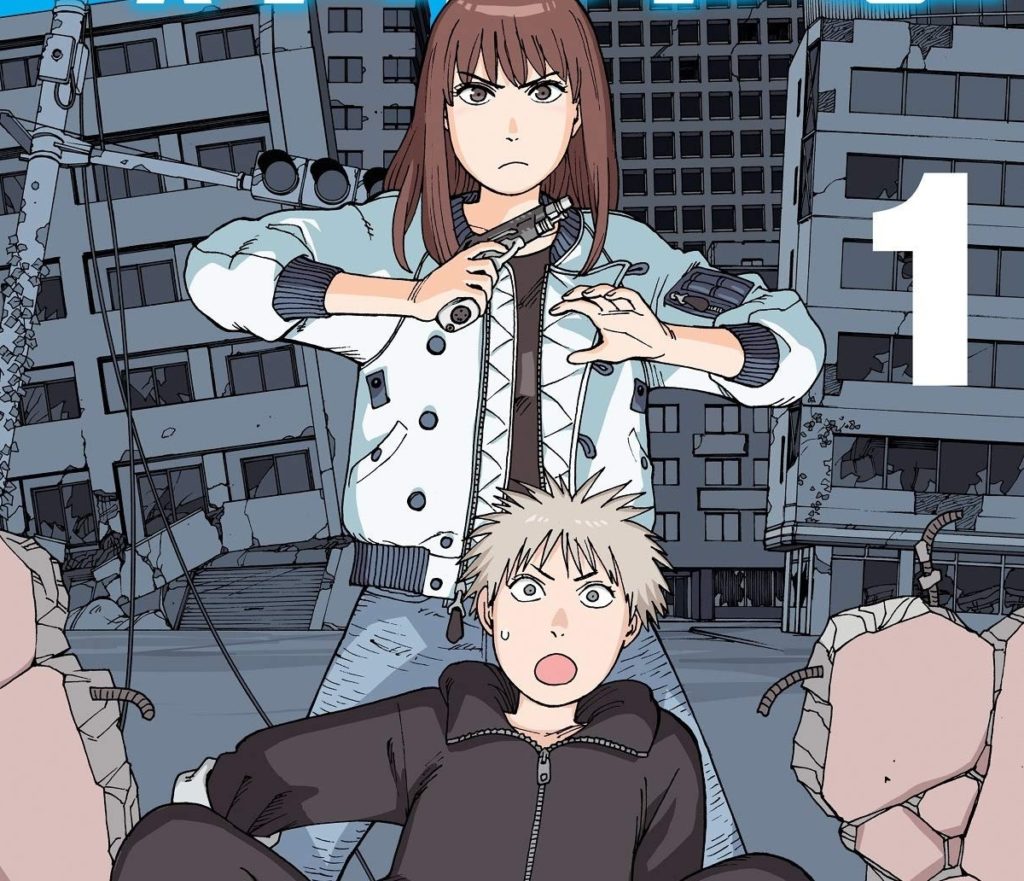Manga: Heavenly Delusion
August 10, 2022 · 0 comments
By Jonathan Clements.

Masakazu Ishiguro’s manga Heavenly Delusion begins with super double-bluff opening chapter, in which a bunch of gormless school-children, tutored by a robot, complain about an unexpected maths test. It’s only when one of them tries to come up with a word for it, unaware that the term “pop quiz” even exists already, that the reader starts to wonder just how clueless these kids are… and why.
There is an outside world, but they don’t get to see it. In fact, as one of their minders reveals, the outside world is awful. The outside world is hell. And if the kids know what’s good for them, they should stop wondering about what’s outside… even if some of them seem haunted by apparitions that seem to come from there.
Ishiguro’s second chapter whisks the reader away to “outside” – a ruined Japan fifteen years after an unspecified disaster, populated by roving bands of scavengers. Maru and Kiruko are teenagers picking over the dwindling, meagre supplies to be looted from the dead cities, dodging other scavengers and searching for “heaven” – a mythical paradise that has somehow preserved civilisation after the disaster.
The nature of the background is drip-fed in tantalising titbits. There are monsters in this new world, and psychics, and multiple polders of what was once humanity, each trying to find its own way to restore civilisation, or what the inhabitants think civilisation once was. Of particular note is a tense stand-off between the kids and three lecherous scavengers, in which Kiruko has to bluff her way through holding them off with an electronic gun. It’s a masterclass in suspense, as page by page we realise that the gun might be a fake… that it does work after all, but that it takes a fatal thirty seconds to recharge after each shot. It’s like that maths problem moving the fox and chickens, but with lethal high stakes.
Masakazu Ishiguro has a strong track record. Some years ago in my Manga Snapshot column for NEO magazine, I was charmed by his And Yet the Town Moves, a gentle celebration of making a difference at the most local, individual level possible. Because I am of advanced years, the thing that first came to mind was John Christopher’s Tripods, but I suspect that the inspirational touchstones for Heavenly Delusion are much newer. Certainly, with its picaresque wanderings from almost-utopia to false-dawn, ever on, it has shades of a whole bunch of episodic TV apocalypses, from Logan’s Run to The Walking Dead. However, the thing that really put me off The Walking Dead over the years was the absence of any real resolution or explanation – people just wandered around in circles, bickering with each other and occasionally being awful. I don’t know about you, but I can get that at home. Ishiguro, however, clearly has a plan somewhere beneath it all, tying together his various strands of marauding monsters, psychic children and brave new worlds.
Jonathan Clements is the author of Anime: A History. Masakazu Ishiguro’s Heavenly Delusion is released by Denpa and available from All the Anime.
Leave a Reply